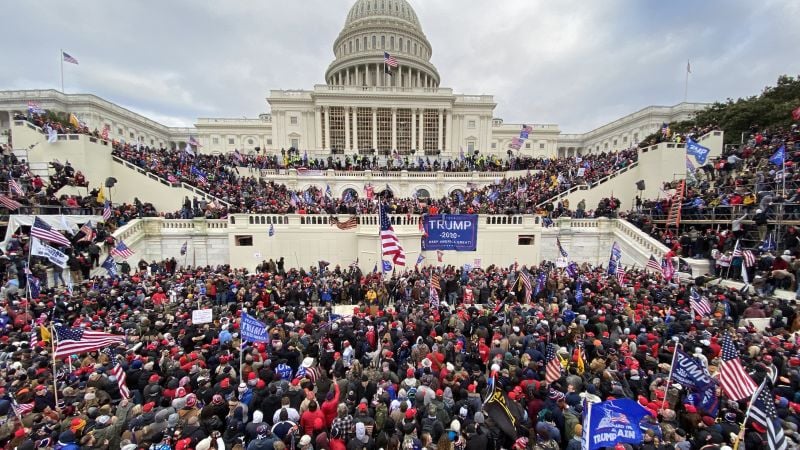The U.S. will mark the anniversary of the January 6 insurrection on Saturday, a milestone that will confer upon the reality-dwelling citizenry a grim reminder of the potency of propaganda and how quickly it can warp perception when introduced into the public square.
Just three years ago, most of the country watched with dismay and horror as a violent MAGA mob beat back authorities and stormed the country’s citadel of democracy. The Donald Trump-incited crush of disillusioned rioters, fueled by a stream of fantastical lies, believed that the 2020 election had been stolen by sinister forces working to undermine the democratic election.
Of course, not only was their belief flatly incorrect, but evidence later emerged indicating that it was Trump who, in fact, had tried to subvert democracy.
Facts, however, have little bearing on the sentiment inside the Republican Party, which has been fed a steady diet of lies and half-truths by Fox News and the rest of the sprawling right-wing media machine. To wit, the false notion that Joe Biden nefariously stole the 2020 election is now widely shared inside the GOP. A CNN poll conducted over the summer found that nearly 70% of Republicans believe Biden’s win was not legitimate, a number that has continued to tick up.



Removed by mod
I would argue that those who graduated from the school of hard knocks are why we have labor laws and unions. It wasn’t college educated people who were the drive behind unions.
Strike: Strikes in the United States
I highly doubt railroad workers, miners, steel workers, and auto workers all had post-secondary education. If it wasn’t for them striking and pushing for better wages. We would be far worse off. Without better wages, post-secondary education would be a pipe dream for money.
National Association for the Protection of Labour
John Doherty (trade unionist)
I doubt someone who had been working since ten years old in 1800s would have any education other than an extremely basic one. Yet, John Doherty pushed to create a national union to fight for a better future.
What Made the Battle of Blair Mountain the Largest Labor Uprising in American History
Seems like uneducated coal miners were far more progressive.
I will agree that post-secondary education has been a overall boon for progressive politics and for a better society. It can be argued that the chance to get post-secondary education would never be possible if it wasn’t those who graduated from the school of hard knocks. It wasn’t until the uneducated working class fought for better a living, post-secondary education was allowed for those with money.
Removed by mod
Union Activists such as:
César Chávez - Folk hero and symbol of hope who organized a union of farm workers.
Eugene V. Debs - Apostle of industrial unionism.
William Green - Former AFL president who moved the federation toward “social reform unionism.”
Mother Jones - “The most dangerous woman in America.”
Lucy Randolph Mason - Social reformer dedicated to workers’ rights and racial justice.
A. Philip Randolph - Organized the Brotherhood of Sleeping Car Porters and fought discrimination in national defense.
None of these people had any post-secondary education yet were major players of the labor movement.
Post-secondary education doesn’t always equal progressive politics. There is the Chicago School of Economics, which according to Paul Douglas:
There is also conservative post-secondary educational institutes such as: Brigham Young University, Liberty University, Bob Jones University, etc.
While post-secondary education has been a tremendous boon. I really don’t care if they have post-secondary education or dropped out of elementary school. What metric we should be using is are people able to see the injustices in the world.
And then they sat through 2-4 decades of Democrats actively voting against the interests of their constituents, ignored it, and vote for them anyway despite the evidence right in front of their eyes.
Democrats aren’t our friends. They stab us in the back while Republicans stab us in the front.
We vote for Democrats because the alternative is getting Republicans. The voting system doesn’t let third parties win. I wish it did. The lesser of two evils is still less evil inflicted on me at the end of the day.
If Democrats lost because people on the left refused to vote for them, they would be forced to change. Problem is everyone claims each election is an existential crisis (doubtful) so you’re never allowed to withhold a vote or vote third party.